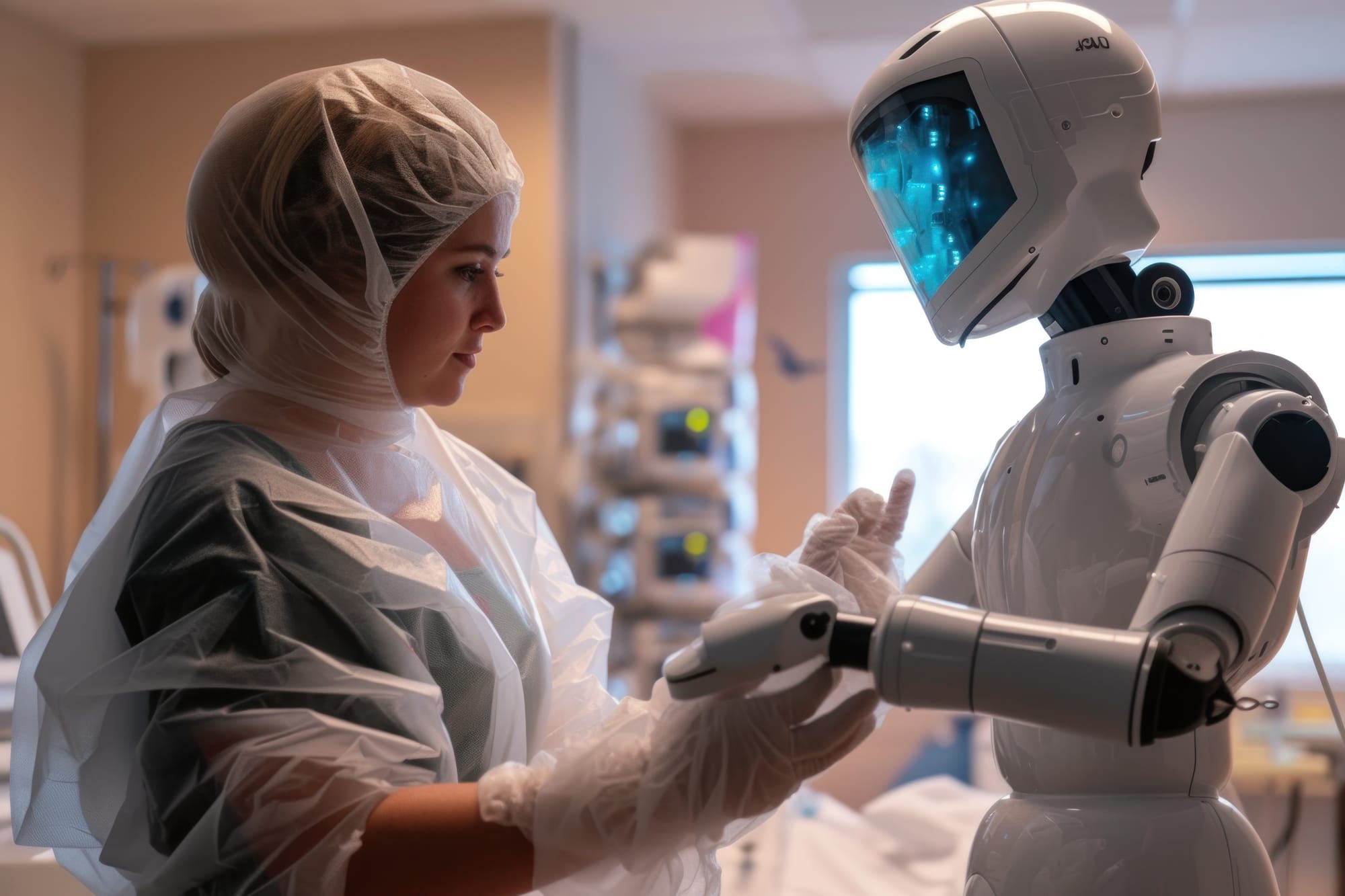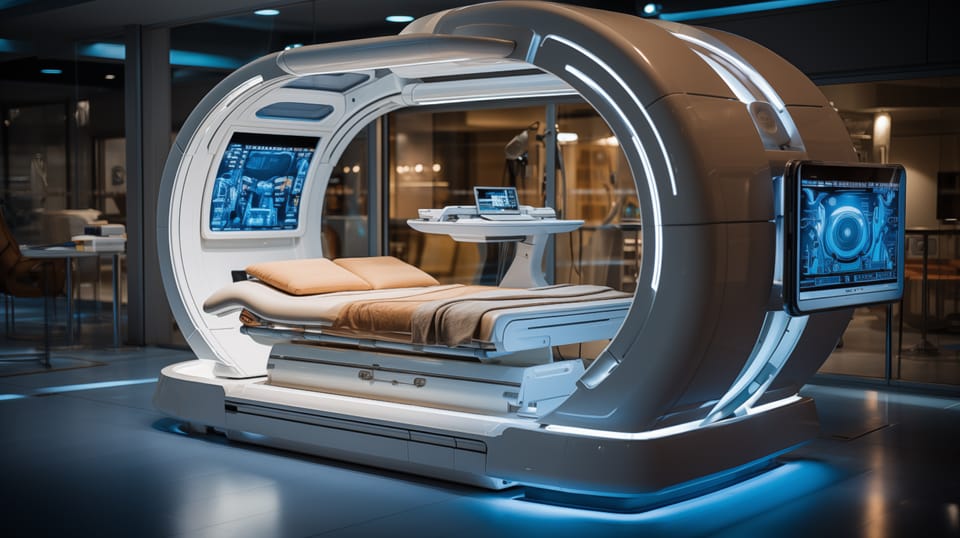The Future Of Healthcare: Automation For Better Patient Care
Table of Content
While the healthcare industry has traditionally been cautious in adopting new technologies, recent years have seen a significant shift. There's been a growing emphasis on integrating automation into various processes. This transition is driven by the desire to enhance efficiency, reduce costs, and ultimately deliver better patient care.
The capability of automation to bring about transformative changes in healthcare is substantial. It opens up possibilities for improved outcomes that benefit both patients and healthcare providers. This evolution, though gradual, is paving the way for a future where technology and healthcare go hand in hand, leading to more effective and patient-centric care.
Automating Diagnostic Processes
One of the most vital applications of automation is in medical diagnosis, an area where technologies like artificial intelligence (AI) and machine learning are demonstrating immense potential.
Here are specific ways automation aids medical diagnosis:
- AI Imaging Tools For Cancer Detection: AI imaging tools can seamlessly scan hundreds of mammogram X-rays, recognizing abnormal breast tissue patterns indicative of cancer. This level of automation aids radiologists in early cancer diagnosis, when treatment success rates are markedly higher.
- Automated Analysis Of Medical Imaging: Similar technologies are being applied across medical imaging, from spotting lung conditions in computed tomography (CT) scans to analyzing retinal abnormalities in eye disease screening.
- Automated Pattern Recognition: By complementing clinician expertise with automated pattern recognition, diagnostic automation is already expediting the identification of health risks and life-threatening diseases.
These advancements in automation improve the accuracy of diagnoses while facilitating quicker treatment and better patient outcomes.

Personalizing Patient Treatment Plans
In addition to diagnosis, automation plays a crucial role in developing personalized treatment protocols tailored to each patient's clinical profile.
Here's how automation makes it possible:
- Optimized Therapies and Treatments: Sophisticated analytics tools aggregate and examine individual health data to determine the optimal therapies and procedures for a given condition. Predictive analytics take this a step further by modeling probable outcomes for various interventions. This assists physicians in selecting treatments most likely to succeed based on a patient's unique medical history and needs.
- Real-Time Patient Monitoring: Real-time analytics applied to patient monitoring provide healthcare teams with early warning of potential adverse events, allowing for timely clinical interventions to mitigate complications even before symptoms manifest.
By proactively managing patient health, automation delivers care that is preventative rather than merely reactive. This automation-enabled customization improves the effectiveness of medical care.
Streamlining Healthcare Administration
Behind the clinical arena, robotic process automation (RPA) is transforming cumbersome healthcare administration. It automates manual tasks, allowing staff to focus on critical work.
Here are some specific benefits of RPA in healthcare administration:
- Improved Patient Scheduling: Automated patient scheduling systems optimize appointment timelines, reducing no-shows and improving adherence to care plans. This leads to better patient management and improved healthcare delivery.
- Efficient Billing Systems: RPA-based billing systems minimize claim errors to accelerate insurance clearances and cash flow. This results in smoother financial operations and quicker settlements.
- Digitized Patient Records: RPA helps in digitizing patient records, making clinical information readily accessible across healthcare settings while maintaining compliance and security. This ensures that critical patient information is available when needed, improving the quality of care.
Such automation enables smoother operations and efficient care coordination. More importantly, it frees up healthcare resources from administrative burdens so clinicians can devote greater time to delivering compassionate, patient-centered care.
Enhancing Surgical Precision With Robotics
Robotic systems are bringing a new level of accuracy and consistency to clinical interventions, especially complex surgeries. These technologies enhance natural dexterity to perform miniature incisions that would be impossible manually.
For a deeper dive into how these robotic systems enhance surgery, through minimally invasive procedures to the advanced dexterity these machines offer surgeons, check out exploring robotic surgery. These innovations not only promise better surgical precision but also a substantial overall improvement in patient care.
Here are some specific applications of robotics in surgery:
- Robotic Cardiac Surgery: Robotic systems allow heart procedures through pinhole incisions by maneuvering tiny instruments with unmatched precision. This reduces the risk of infections and complications, leading to better surgical outcomes.
- Robotic Orthopedic Surgery: In orthopedic surgery, robotic systems are used to implant knee and hip replacements more accurately while minimizing trauma to surrounding muscles and tissues.
Patients benefit from quicker recovery in addition to better surgical outcomes. Looking ahead, advancements like remote telesurgery could enable doctors to direct robotic procedures from across distances, expanding access to specialized care. By working in parallel with skilled surgeons, surgical robots are making interventions safer, less invasive, and more effective.
Optimizing Drug Development and Clinical Trials
It takes over a decade for a new drug to progress from initial discovery to regulatory approval. Automation is helping shorten this lengthy process to make lifesaving treatments available faster to patients who need them.
Here are some specific applications of automation in this field:
- High-Throughput Screening: Advanced robotics methodically tests enormous libraries of chemical compounds for potential therapeutic properties, doing so more efficiently than manual approaches.
- Drug Optimization: Machine learning algorithms are used to identify and optimize the most promising candidates for drugs to treat diseases.
- Clinical Trial Management: Digital tools facilitate participant recruitment and real-time data gathering and accelerate vaccine and drug testing phases.
- Clinical Data Analysis: Automated analytics are used to extract actionable insights from vast datasets, including adverse event monitoring and efficacy analysis across patient demographics.
These advancements translate to faster regulatory review and drug approvals. With automation, the future of drug development is not just about discovering new cures but expediting their delivery to improve patient outcomes. This is a significant stride towards a more efficient and effective healthcare system.
Improving Patient Engagement and Monitoring
Automation plays an important supportive role outside formal healthcare settings. It leverages various technologies, each with its unique function, to enhance patient education, engagement, and monitoring.
- Digital Symptom Checkers and Chatbots: These tools address basic health queries, providing immediate responses and guidance based on the symptoms reported by the patient.
- Automated Communication Systems: These systems send appointment reminders and medication alerts, ensuring patients adhere to their healthcare schedules and treatment plans.
- Wearable Sensors and Home Diagnostic Devices: These devices collect real-time wellness data, such as heart rate and blood sugar levels.
The data collected is transmitted to healthcare providers, enabling remote monitoring and proactive management of chronic conditions. This patient-centered automation empowers individuals to take greater ownership over their health, with the security of professional care in the background. The result is a more engaged and informed healthcare experience.
Final Thoughts
Automation holds transformative potential across the sweep of healthcare, from assisting with diagnosis to supporting aftercare. By augmenting human capabilities and streamlining systems, it promises to raise quality, lower costs, and achieve better medical results for enhanced patient well-being.
While technology cannot replace human relationships and professional judgment, it can enable healthcare providers to practice to the fullest extent of their capabilities. When thoughtfully implemented, automation can free skilled clinicians to spend more time addressing the emotional, social and psychological needs of patients.
Moving forward, healthcare leaders will need to strike the right balance between technological progress and the irreplaceable human touch. Automation may drive the future of healthcare, but empathy and care will remain at its heart.











